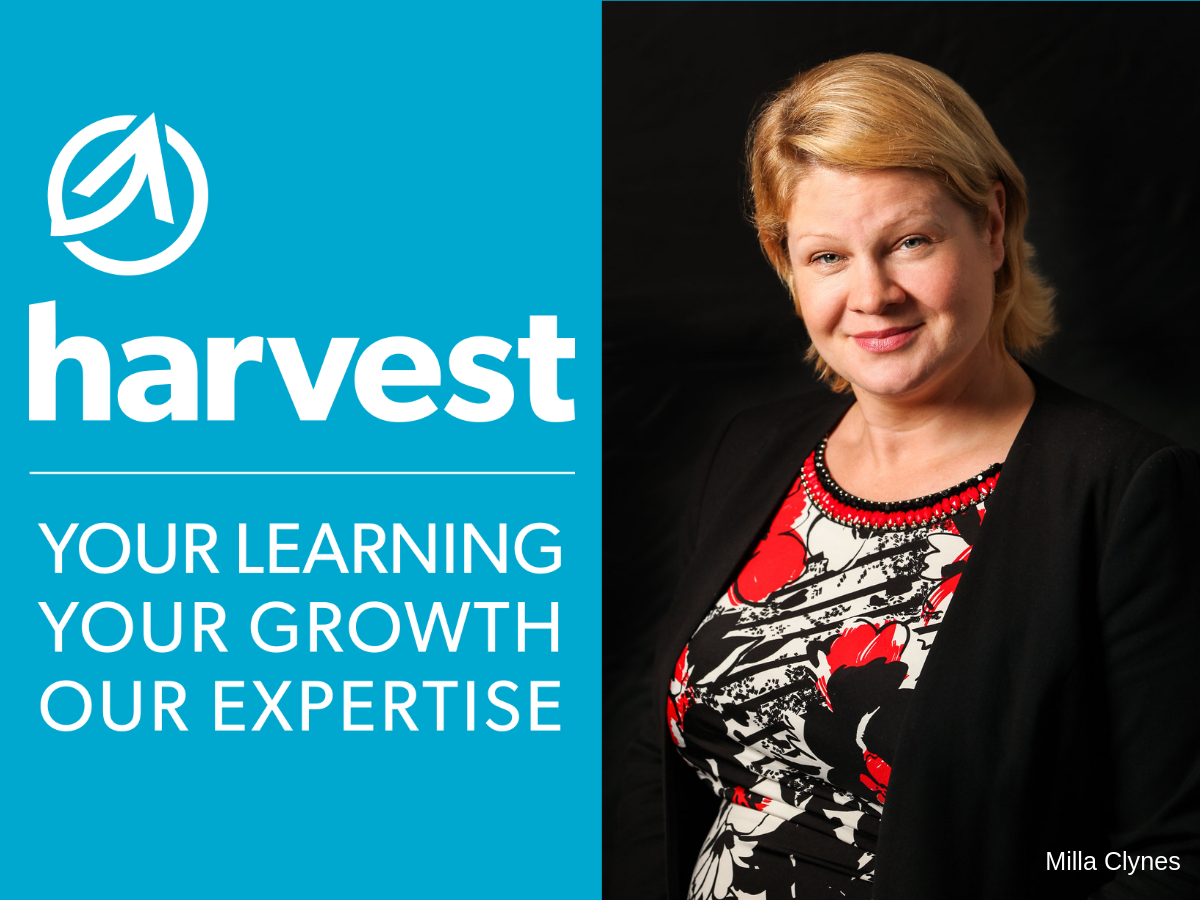Onboarding is an opportunity to engage your employees from the start
Harvest Director of Operations and Senior Learning Specialist, Milla Clynes, shares her insights on Employee Onboarding.

Onboarding new employees presents organisations with a great opportunity to connect with new, enthusiastic employees from the beginning in a way that results in greater engagement and retention. Despite this, the process of onboarding of new employees is an often-missed opportunity to engage new employees.
Often new employees get an introductory onboarding training in their first week, meet their manager and colleagues, and are shown around the office. There may be some basic training available on job-specific skills and knowledge, but generally engagement tends to decrease after the first week or two when the reality of day-to-day work kicks in.
In the book “Effective Onboarding (What Works in Talent Development)” by Norma Davila and Wanda Pina-Ramirez, published by the Association for Talent Development (ATD), onboarding is described as “the business driver that ensures your company’s new or new-to-role employees are the right fit”. It further describes onboarding as a critical step in connecting the new employees with the organisation’s culture and their roles.
Employee onboarding should not be confused with employee orientation, which sometimes forms part of the onboarding process. The onboarding process is far broader in its reach and serves to develop the employer brand and help the employee decide if joining the company was a good decision or not.
Here is a list of best practice onboarding activities that can form part of an effective onboarding programme. Ultimately the onboarding process needs to be consistent but tailored to the employee’s role and level of experience – and it should feel personalised.
Pre-Joining Activities
• Engage with new joiner regularly while they are serving out their notice period
• Welcome email/letter/pack sent with e.g. e-newsletters, corporate videos, details on values and culture
• Online induction designed for pre-start date completion
• Develop an induction check list for all planned activities
• Line manager check-in week before joining
First Day Activities
• Send a company/department/team-wide welcome email, introducing your new team member
• Do a “walk-around” the office and introduce them to key team members – focus on making them feel welcome
• Cover the basics, bathroom, fire escapes, water-cooler, kitchen and explain lunch breaks
• Print off a seating plan, site map and organisation chart
• Cover essential admin, such as forms, computer access, email signature templates, ID cards, health and safety information, parking, security passes, key contact numbers (including IT support), and office supplies
• Give an overview of the company (including mission, vision, values, and corporate culture), the department and the team. Explain how role fits in – involve the whole team
• Run through job description, ensure understanding of tasks and responsibilities
• Assign a ‘buddy’ or mentor to the new hire to help them settle in
First Week Activities
• Discuss the skills gaps identified by their Training Needs Analysis and the available learning and development options
• Direct them to view online staff biographies
• Offer to take them out for lunch
• Intersperse the ‘housekeeping’ information between other induction topics
• Give them a copy of your induction checklist
• Discuss role in more detail and start off some tasks
• Agree objectives and timescales to work toward during the probation period and explain how performance will be assessed
First Month Activities
• Meet regularly to check that your new team member is settling in and has everything they need
• Organise coaching or other on-the-job training needed as quickly as possible – regular bite-sized learning is more effective at this stage than long classroom programmes
• Continuous engagement rather than ‘sheep dipping’ with generic information
• Give regular, ongoing feedback on performance and progress
• Listen actively and seek feedback on you, the induction process, and the company in general
• Manage the probation process closely and use it to determine (on both sides) whether you are a good fit
Not having a proper onboarding process in place can lead to employee engagement issues and even employees leaving within their first year, causing rehiring expenses and potentially a prolonged vacancy in a key role. On the other hand, the benefits of paying attention to this group of employees include a shortened learning curve, reduced stress and increased productivity, which will ultimately benefit the bottom line (ATD Whitepaper Onboard, Engage, Develop, 2017).
Author: Milla Clynes – Harvest Director & Senior Learning Specialist
If you want to talk more about your company’s onboarding programme and how it could be improved, please contact us on hello@harvest.ie or on social media.

